Recent Articles
Popular Makes
Body Types
2019 Hyundai Veloster Road Test and Review
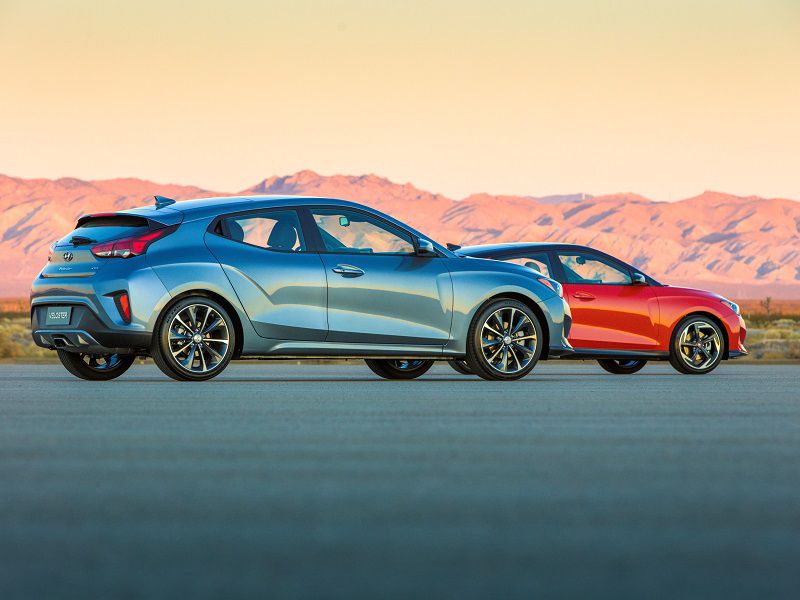
2019 Hyundai Veloster Rear Quarter Grey Desert ・ Photo by Hyundai
You won’t find the word Veloster in any dictionary, except one that had been created by the marketing staff of Hyundai. That’s because Veloster is not a real word. Still, there’s some logic. That prefix, velo, is generally associated with speed, as in velocity. Think of the Velocette, a hot British motorcycle produced from 1904 to 1971. Or velocipede, having to do with bicycles like the ones the guys pedal through the annual Tour de France. And it actually makes sense in connection with this particular Hyundai, which can produce some degree of velocity when properly equipped, and also has a style that can reasonably be called unique, something not easily achieved in today’s car biz.
One of a Kind
Yes, unique is an absolute, as in one-of-a-kind, without modifiers like “very” or “quite.” After all, how many new cars do you see with two doors on the passenger side, one longer door on the driver’s side, and a fourth portal (the back hatch) at the rear? Here's a clue: Just this one. This quirky arrangement set the Veloster apart when its first generation debuted in the fall of 2011, and, a testimony to its market appeal, it carries forward to the new-for-2019 second generation. Is there a functional reason for this design? If there is, it’s hard to discern. Climbing into the left side passenger seat from the driver’s side requires contortions, very much like slithering into the back seat of a coupe. So the persistence of this neither-nor design (neither coupe nor sedan) has nothing to do with enhanced usefulness. Quite the contrary — it’s strictly a matter of style.
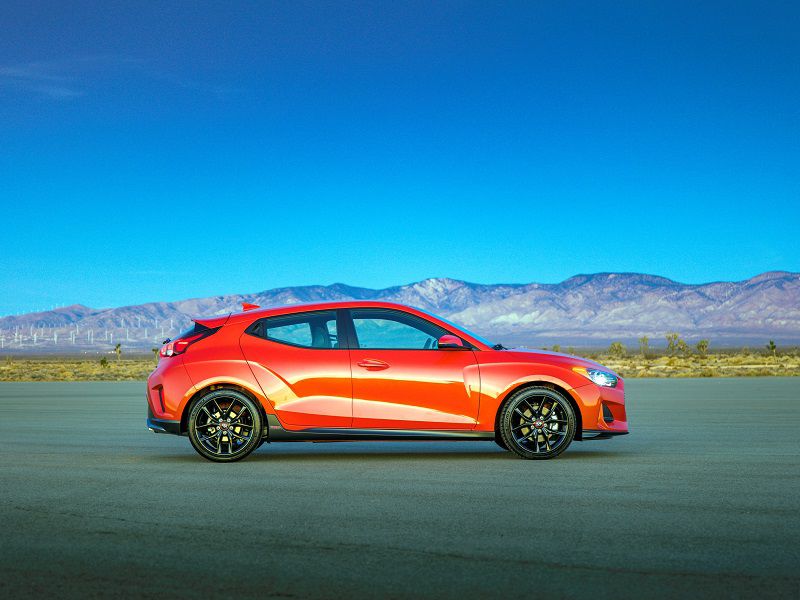
Photo by Hyundai
Style: There's plenty of that.
Beyond the three-door non-conformity, the 2019 model year brings a bolder-looking Veloster. There's a little more fender flare surrounding the wheel wells, a slightly lower roofline falling away steeply to the rear window, a bigger hexagonal grille, and air scoops at the outer edges of the front fenders. From the rear, the Veloster flaunts a set of muscular haunches, and overall the new car looks a little more squat and powerful. The look might also suggest a crossover suv, but that is something the Veloster is not. Nor does it pretend to be.
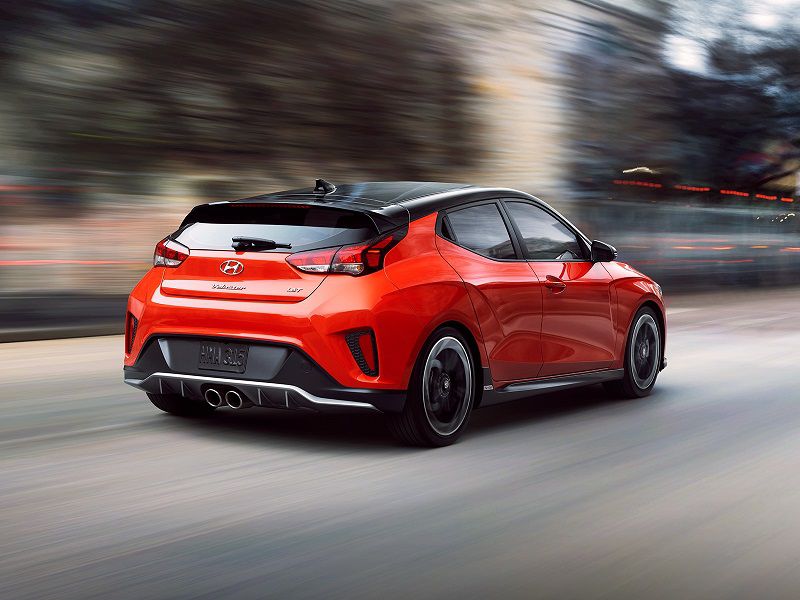
Photo by Hyundai
Power
There is more power this year, at least in the lower trim levels. The base engine goes from a 132-hp 1.6-liter four-cylinder to a 2.0-liter rated for 147 horsepower at 6200 rpm and 132 pound-feet of torque at 4500 rpm. Transmission choices are a standard six-speed manual or an optional six-speed automatic. But the velo element in Veloster belongs to the models propelled by a turbocharged 1.6-liter four — 201 hp at 6000 rpm and 195 lb-ft of torque from 1500 to 4500 rpm, a veritable mesa of torque. Even better, there’s a wide-open throttle overboost function that raises the torque peak to 202 lb-ft. The turbo engine is paired with either the standard six-speed manual or an optional seven-speed dual-clutch automatic. Although many dual-clutch automatics provide quicker shifts than drivers can achieve with a manual gearbox, the Veloster is an exception. The seven-speed is a smooth operator in its fully automatic mode, upshifting and downshifting intuitively. But its responses to the shift paddles are unhurried and can be confused by hasty action.
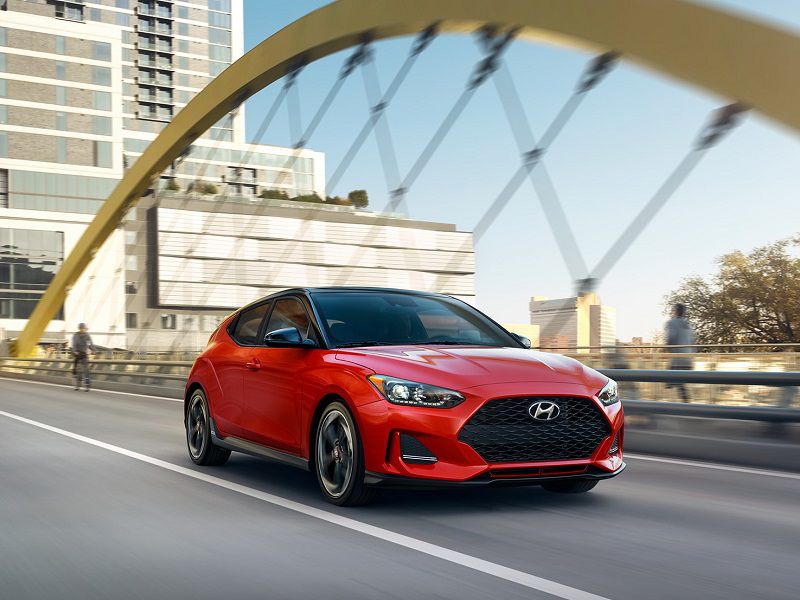
Photo by Hyundai
The Korean GTI
The hottest setup is the R-Spec, which stands halfway up the Veloster price ladder at $23,785. That price, almost $3,500 less than a Volkswagen Golf GTI, includes firmer suspension tuning and the option of Michelin Pilot Sport 4 summer performance tires on 18-inch wheels. There's lots of grip, and very little rock and roll. And the action of the manual gearbox, augmented by a B&M Racing sport shifter, is very snick-snick, as well as about a half-second quicker to 60 mph (expect about 6.6 seconds) than the automatic.
Put the R-Spec on a twisty back road, or at a road racing circuit track day, and it rewards the driver with limited body roll and eager responses, changing direction like an NFL running back. These traits are most compelling in the R-Spec, but they are also present in the other six trim levels, including the three powered by the base non-turbo 2.0-liter engine.
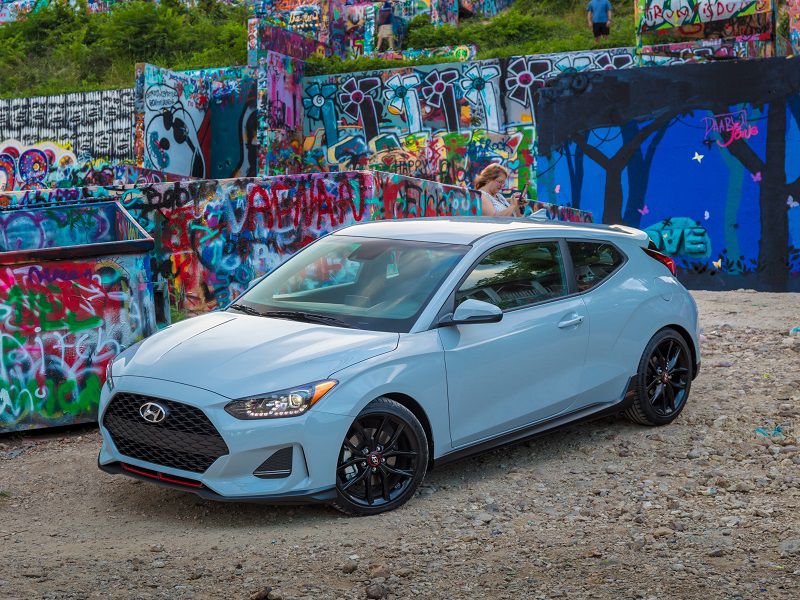
Photo by Hyundai
Strong Bones
The 2019 Veloster’s enhanced dynamic appeal has little to do with the powertrain. Aside from a new torque-vectoring system, transferring power to the outside front tire in hard cornering, everything about the turbo engine and the transmissions is basically unchanged from the previous generation. Instead, the key to the new Veloster’s athleticism lies in its new multilink rear suspension, which replaces last year's beam axle; its chassis, which has been stiffened substantially; and its steering, which has gone from OK to exemplary. Hyundai product planning VP Mike O’Brien unequivocally calls this the best chassis the company has thus far produced, and the payoff is a car that rates consideration with hot hatchback icons like the Volkswagen GTI.
An interesting footnote to the Veloster’s more sporty persona is the exhaust note. Neither engine sounds very seductive at high rpm, so Hyundai augments the internal combustion orchestra via the car’s audio system.
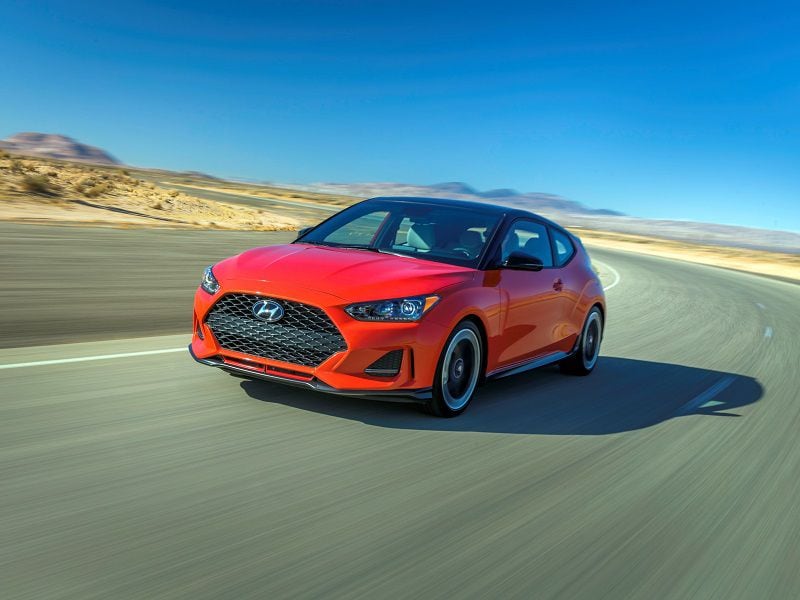
Photo by Hyundai
The Inside Story
While the redesigned Veloster’s exterior has gained panache, the interior upgrades are just as comprehensive. The cabin features better materials, a different look for each of the trim levels, and improved infotainment and connectivity (including Apple Car Play and Android Auto). Meanwhile, tempting options include a premium Infinity audio system, an 8.0-inch touch-screen with navigation, wireless recharging, and Eyes Free Siri iPhone integration. Safety features are contemporary and comprehensive. A forward-collision alert with automatic braking is standard, as is lane-keeping assistance, high beam assist, and a driver attention warning. The latter is a little spooky — the system monitors what you, the driver, are doing behind the wheel and decides whether you’re fatigued or driving carelessly. This feature isn’t unique to Hyundai, and we’ll be seeing more sophisticated systems in the near future. When will they begin refusing to allow certain activities — exceeding the speed limit, for example, or making the tires squeal in hard cornering?

Photo by Hyundai
Pricing
The 2019 Veloster's pricing is typical Hyundai — above-average equipment at slightly below-average prices. The new Veloster price ladder goes as follows: 2.0 Manual Transmission, $19,385; 2.0 Automatic (six-speed), $20,385; 2.0 A/T Premium, $23,635; Turbo R-Spec, $23,785; Turbo DCT (seven-speed automatic), $26,285; Turbo Ultimate M/T, $27,535; and Turbo Ultimate DCT, $29,035.
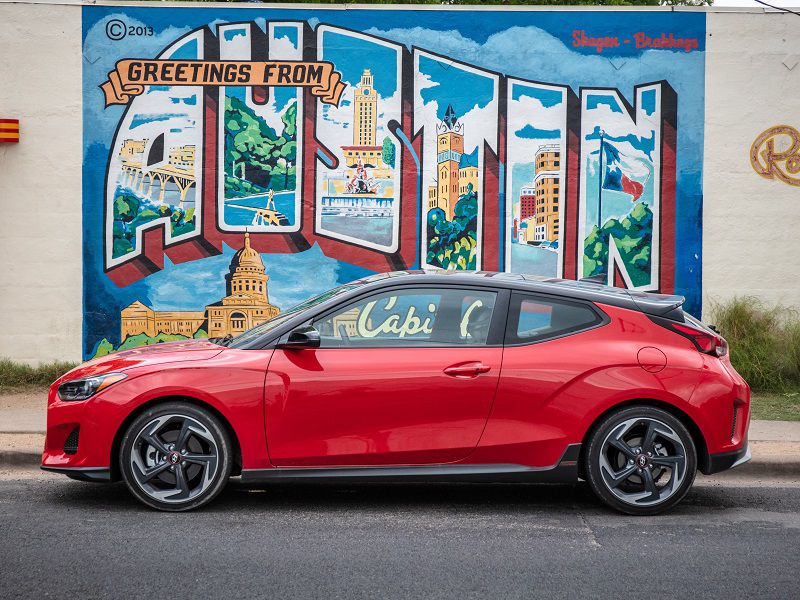
Photo by Hyundai